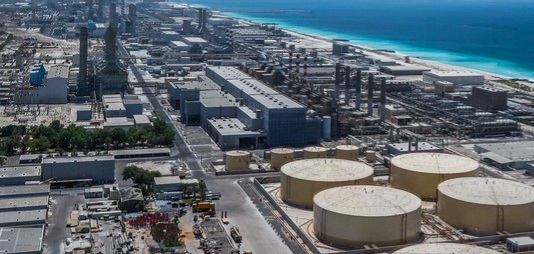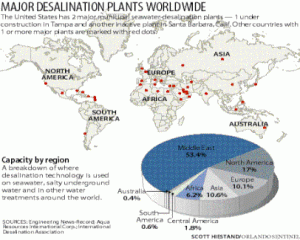Desalination plants
As Water Scarcity Increases, Desalination Plants Are on the Rise
The need of pure water in the world is intensifying as the years pass. Desalination plants are a need of future in Sindh and Baluchistan and Water Remedy is keen to work on these plants. These plants are used to convert sea water to drinking water on ships and in many arid regions of the world, and to treat water in other areas that is fouled by natural and unnatural contaminants. Mostly desalination plants are installed on seawater for purification. The salt and other impurities are removed from the seawater to make water usable for industries and for domestic purposes. Water remedy has highly qualified personals who are looking forward to work on such projects in future for securing and overcoming the need of pure and healthy water.
Please Click to check full range of our services
“After decades of slow progress, desalination is increasingly being used to provide drinking water around the globe. Costs for processing salt water for drinking water have dropped, but it remains an expensive option and one that creates environmental problems that must be addressed.”
Each day 100 million gallons of seawater are pushed through semi-permeable membranes to create 50 million gallons of water that is piped to municipal users. Carlsbad, which became fully operational in 2015, creates about 10 percent of the fresh water the 3.1 million people in the region use, at about twice the cost of the other main source of water.
The cost of desalinated water has been coming down as the technology evolves and the cost of other sources increases. A recent study found that the problem of brine waste from the desalination process has been underestimated by 50 percent.
A study by the UN Institute for Water, Environment and Health published earlier this year contends that the problem of brine waste has been underestimated by 50 percent and that, when mixed with the chemicals meant to keep systems from fouling, the brine is toxic and causes serious pollution.
Another problem comes from the sucking in of sea water for processing. When a fish or other large organism gets stuck on the intake screen, it dies or is injured; in addition, fish larvae, eggs and plankton get sucked into the system and are killed.
“At our intake we [draw in] tiny little organisms, that amount to about a pound and a half of adult fish per day,” said Jessica Jones, a spokesperson for Poseidon Water, which owns the Carlsbad plant. “To mitigate that we are restoring 66 acres of wetlands in San Diego Bay. And we just got a new intake permitted which will lessen the impacts.”
Desalination plants operate in more than 120 countries in the world, including most of Gulf countries and others like Saudi Arabia, Oman, United Arab Emirates, Spain, Cyprus, Malta, Gibraltar, Cape Verde, Portugal, Greece, Italy, India, China, Japan, and Australia. The largest Seawater Desalination Plant in the Americas came online in 2015 in Carlsbad, CA producing 50 million gallons per day. Worldwide, desalination plants produce over 3.5 billion gallons of potable water a day. The installed RO desalination plant capacity has increased in an exponential scale over the last 30 years, for reference click here:
“The builder will spend tens of millions of dollars locally to build a water facility for the benefit of Orange County residents. Private investors will put up the money protecting Orange County’s taxpayers. It’s a win-win situation.”
~ Carolyn Cavecche, President and CEO, Orange County Taxpayers Association
“It is a partial solution to water scarcity,” said Manzoor Qadir, an environmental scientist with the Water and Human Development Program of United Nations University. “This industry is going to grow. In the next five to 10 years, you’ll see more and more desalination plants.”
Saudi Arabia and other countries in the Middle East and North Africa are at the center of this growth, with large new desalination projects planned or being built. Renewable water supplies in most of these countries already fall well below the United Nations definition of absolute water scarcity, which is about 350 gallons per person per day, and a 2017 report from the World Bank suggests that climate change will be the biggest factor increasing the pressure on water supplies in the future.
- The Times.
Even in Saudi Arabia, where vast oil reserves (and the wealth that comes from them) have made the country the world’s desalination leader, responsible for about one-fifth of global production, there is a realization that the process must be made more affordable and sustainable. At the university here, engineers are aiming to do just that.
“We are trying to develop new processes, to consume less energy and be more environmentally friendly,” said Noreddine Ghaffour, a researcher in the Water Desalination and Reuse Center at the university, which is universally known as Kaust.


